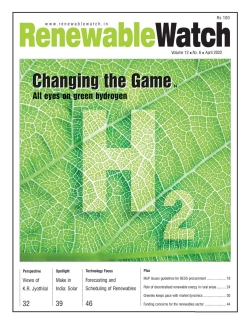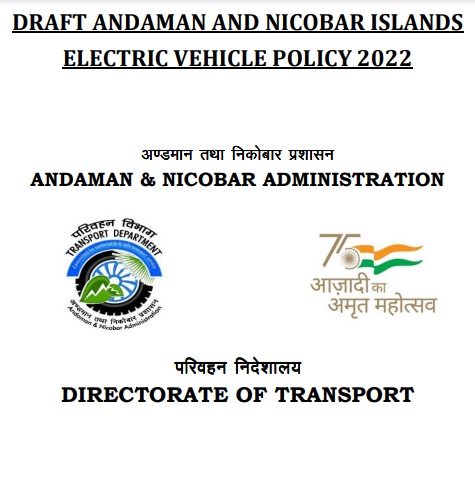Knowledge Hub
Congestion management in hybrid electricity markets using different techniques
2021
Author(s): Narain A
ATC- based (available transfer capability) CM (congestion management) has been used in this thesis to relieve the congestion of the system. To enhance the ATC value, the integration of a wind battery system has also been used. Technical challenges i.e., selection of critical zones, optimum location for WPG and BESS, ATC enhancement using proper charging/discharging of battery in a wind battery system, and CM have been considered.
An efficient wireless topology for electric vehicle battery charging
2021
Author(s): Nama, J K
Recent studies on the topological framework of IWPT system declines required adapt ability and performance for regularly updating EV battery technology. Some of the identified regions include variations of the battery voltage, capacity, and management system for the light load (personal) to heavy load (passenger vehicle); adopted topology for on-board operation; topological limitations for control and gating scheme. These reasons have promoted academia and industry-wide efforts to acquire a flexible and adoptable IWPT technology for future EVs.
A Review of Lithium-Ion Battery for Electric Vehicle Applications and Beyond
2019
Author(s): Chen W, Liang J, Yang Z, Li G
This paper reviews recent research and developments of lithium-ion battery used in EVs. Widely used methods of battery sorting are presented.
Comparison of Different Battery Types for Electric Vehicles
2017
Author(s): Iclodean C, Varga B, Burnete N, Cimerdean D, Jurchiș B
This study presents the autonomy of an Electric Vehicle that utilizes four different types of batteries: Lithium Ion (Li-Ion), Molten Salt (Na-NiCl2), Nickel Metal Hydride (Ni-MH) and Lithium Sulphur (Li-S), all of them having the same electric energy storage capacity.

Powering Up: Understanding Traction Batteries: Technology and Standards
2022
Author(s): Bej S, Bhagyasree
Rapid improvements in battery technologies are crucial in achieving the required pace of transition to cleaner mobility. The high energy density, specific energy, and cycle life of the LiBs make these batteries outperform other available battery chemistries.
Benefits of the 2020 Multi-State Medium- and Heavy-Duty Zero-Emission Vehicle Memorandum of Understanding
2022
Author(s): Sen A, Minjares R, Miller J, Braun C
This paper estimates the multiple benefits of achieving the zero-emission medium- and heavy-duty sales targets of the Multi-state Memorandum of Understanding in select states. Without new policies, this study finds that the baseline reduction in well-to-wheel CO2 emissions of the medium- and heavy-duty fleet in these states are on a path to decline 8% below 2020 levels by 2030 and 23% below 2020 levels by 2050. NOx emissions are projected to decline through the late 2030s as the oldest generation of ICE vehicles are replaced with newer vehicles manufactured to comply with U.S. 2010 and Tier 3 emission standards.
Advancements in Battery Technologies of Electric Vehicle
2021
Author(s): Bupesh Raja VK, Raja I, Kavvampally R
This paper reviews the current major challenges faced by the Electric Vehicle Industry along with possible solutions to overcome them.

Draft Andaman and Nicobar Islands Electric Vehicle Policy 2022
2022
Publisher/Organisation: Andaman & Nicobar Administration, Directorate of Transport
The primary objective of the A&N Islands EV Policy 2022 is to accelerate adoption of EVs for improvement in the air quality such that they contribute to 30% of the new registrations by 31st December, 2026.
Update on the global transition to electric vehicles through 2020
2022
Author(s): Cui H, Hall D, Li J, Lutsey N
This briefing provides an update on electric vehicle market and policy developments globally through 2020, with a focus on changes since our previous update in 2019. It includes information on how several governments in major markets have revised their vehicle electrification targets and developed related policies, as well as summarizes global electric vehicle market growth in 2020. This briefing considers battery electric vehicle (BEV), plug-in hybrid electric vehicle (PHEV), and fuel cell electric vehicle (FCEV) technologies but does not examine non-plug-in hybrid electric vehicles.
Banking on electric vehicles in India
2022
Author(s): Singh R, Ghate A, Kulkarni I, Stranger C, Laemel R
The report indicates that electric two-wheelers, three-wheelers, and commercial four-wheelers are early segments to prioritise under PSL. Moving forward, the engagement of other ministries and industry stakeholders will be important to ensuring the guidelines designed can effectively enhance EV investment in India. To maximise the impact of the inclusion of EVs, the report also recommends a clear sub-target and penalty mechanism for priority sector lending to renewable energy and EVs.



